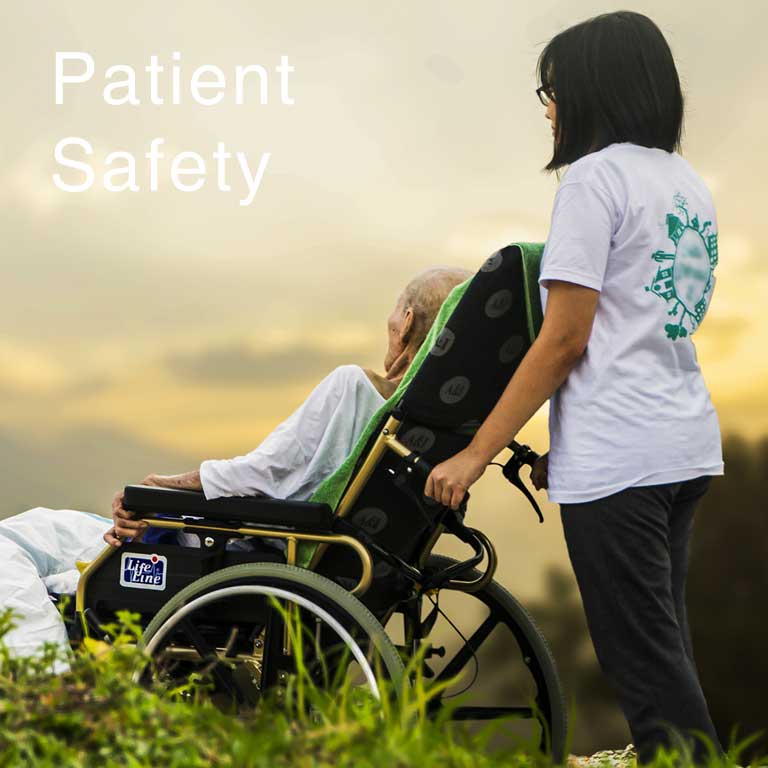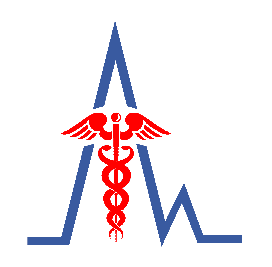

Prevention of ventilator associated pneumonia - Patient Safety
Prevention of ventilator associated pneumonia
Scope: This document describes the recommendation to prevent ventilator-associated pneumonia (VAP)
Responsibility:
- Doctor
- Sister
- Infection control sister
Recommendations:
- Surveillance: Regular infection surveillance to find out new cases of VAP must be conducted in ICUs. The diagnosis of VAP can be done according to the CDC criteria. Infection control sister collect regular data from ventilated patients and the ICU consultant helps to identify diagnosis of VAP. The VAP diagnosis form helps to keep the records of patients diagnosed to have VAP and finally the rate is calculated by 1000 ventilator days as per NNIS guidelines.
- Education and training: Education and training of the staffs in cleaning, disinfection and maintenance of respiratory equipment is essential.
- Ventilator circuits
- Use disposable ventilator circuits
- Replace mechanical ventilators circuit every 48 hours or protect with filter
- Periodically drain breathing tube condensation traps, taking care not to spill it down the patient’s trachea; wash hand after the procedure
- Suctioning
- Use single use disposable gloves and wash hands before and after the procedure
- Use sterile suction catheter and sterile fluid to flush the catheter
- Change suction tubings between patients
- Suction bottle
Non-disposable bottle should be washed with Cidex or cleaning with 1% Sodium Hypocloride solution. (1 hrs. for infected patient)
- Oxygen mask
Change oxygen mask and tubings in between patients and more frequently if soiled
- Nebulizers
Change and reprocess device between patients by using sterilization or high level disinfectant or use single-use disposable items.
- Humidifiers
- Clean and sterilize device between patients.
- Fill with sterile water, which must be changed every 24 hour or sooner, if necessary
- Ventilators
After every patient, clean and disinfect (high level) or sterilize reusable components of breathing system or the patient circuit according to the manufactures
Prevention & surveillance of infection associated with urinary catheterization - Patient Safety
Scope: This document describes the infection control policies to prevent catheter associated UTI. It also tells about the surveillance procedure to detect catheter associated UTI rate in the hospital.
Responsibility:
- Ward sister
- Doctor
- Infection control sister
Recommendations
- Consideration prior to catheterization
- Urinary catheter must be inserted using aseptic technique and sterile equipment
- Aseptic technique should be maintained throughout the procedure
- Administration of systemic antibiotic at the time of catheterization is not recommended
- Check the appropriate size and expiry date
- Procedure of catheterization
- All equipment must be sterile
- Hand wash
- Sterile gloves worn
- Clean the periurethral area. In male cleanse the glans with a disinfectant preparation. In a female separe the labia and cleanse the vulva using front to back technique
- Single use sachets of sterile lubricants should be used
- Insert the catheter by no touch technique
- Connect catheter with sterile, closed urinary drainage system
- Hang the drainage bag below the level of the bed to stop reflux
- Secure the catheter to the patient’s thigh or abdomen to prevent movement and urethral meatal ulceration
- Gloves removed and wash hand
- Maintenance of catheter
- Keep periurethral area clean and dry
- Don’t disconnect the catheter from the drainage tube
- Aspirate urine proximal to the junction of the drainage tube
- Keep the bag below the level of the bladder
- Empty bag every 8 hourly or earlier if full
- Collection bag must never touch floor
- Surveillance of catheter associated infection
Infection control sister takes data of urine culture form microbiology department and look for catheter-associated infection in-patient. The ward sister and resident doctor can inform the ID sister if catheter associated UTI is suspected. The Catheter associated UTI diagnosis form must be filled. The monthly surveillance is done and presented in infection control committee meeting. In high risk area data collected from ITU database gives the idea of catheter utilization days. UTI rate is determined in terms of 1000 catheter days.
- Collection of urine from an indwelling catheter
- The collector should wear gloves
- The catheter tubing should be clamped off above the port to allow collection of freshly voided urine
- The wall the tubing should be cleaned vigorously with 70% ethyl alcohol
- Urine is aspirated via a needle and syringe
Prevention of Central Line Associated Infection - Patient Safety
Scope: This document describes the recommendation to prevent infection associated with central line to ensure patient safety.
Responsibility
- Doctor
- Sister
- Infection control sister
Recommendations
- Surveillance: Regular infection surveillance to find out new cases of IV associated infection must be conducted in hospital. The diagnosis of IV line associate infection can be done according to the CDC criteria. Infection control sister collect regular data from patients with central line and the respective consultant helps to identify diagnosis of infection. The diagnosis of central line infection is documented in central line infection format form that helps to keep the records of patients and finally the rate is calculated by 1000 central line days as per NNIS guidelines.
- Education and training: The intravascular catheter should be inserted by designated trained personnel with documented competence.
- Procedure of insertion of central venous catheter
The insertion of CVC is an aseptic procedure. The hands must be washed by surgical hand wash technique. Sterile gloves, gown and mask should be worn. Use large sterile drapes to cover the area.
- Collect all necessary equipment
- Wash hands
- Disinfect intravascular skin insertion site with 0.5% alcoholic Chlorhexidine or 10% alcoholic povidone idodine with friction for at least 2-3 min prior to venepuncture.
- Allow the insertion site to dry before inserting the catheter.
- Surround the site with large sterile drape.
- Insert the CVC as swiftly as possible, maintaining a no-touch technique throughout the procedure.
- Blood should be aspirated freely to ensure that that the catheter is in a vascular place before injecting fluid. Position of CVP line must be checked by X-ray.
- Leave the clean and dry after insertion.
- Secure the catheter with an appropriate sterile or clean semi-permeable dressing.
- Label the site with insertion date. Record insertion date in the patient’s medical note.
- Connect up IV administration set.
- Ensure that all sharps are safely discarded din the sharp bin.
- Wash and dry hands.
- Catheter site dressing regimen
Sterile dressing should be used to cover the catheter site. Either gauze or sterile transparent semi-permeable dressing should be used. If the site is bleeding or oozing, a gauze dressing is preferred. Well-healed tunneled CVC sites may not require dressing. For short-term CV the gauze dressing should be replaced every 2 days and transparent dressing s every 7 days.
- Antimicrobial prophylaxis
Topical antimicrobial ointments should not be used routinely prior to insertion or as a part of routine catheter site care.
- Anticoagulant flush solution
Anticoagulant flush solution can be used to prevent catheter thrombosis. The solution must be sterile and not preserved for more than 48 hours.
- Replacement of set tubings and parenteral fluids
Administration sets, should be replaced no more frequently than 72 hours unless catheter related sepsis is suspected.
IV tubings used to administer blood, blood products or lipid emulsions should be replaced at the end of the infusion or within 24hr of initiating infusion. Lipid emulsion infusion should be completed within 24h and blood within 4 hr of hanging.
- Replacement of catheter
Do not replace routinely CVC or arterial catheters. Replacement of CVC is necessary if the patient is haemodynamically unstable and catheter related sepsis is suspected.
- Diagnosis of catheter related infection
Diagnosis of catheter related infection is done by CDC criteria. Regular local site inflammation is observed. Blood culture drawn through the catheter and peripheral vein are sent to Microbiology for automated blood culture. Catheter tip culture is also done to diagnose CVC associated infection
Prevention of Surgical Site Infection (SSI) - Patient Safety
Scope: This document describes the method of surveillance and recommendations to prevent surgical site infection ensuring patient safety.
Responsibility
- Doctor
- Nurses
- Infection control nurse
- Housekeeping staffs
Recommendations
- Surveillance of SSI
CDC definitions are to be followed to diagnose surgical site infection. SSIs are considered to be nosocomial if the infection occurs within 30 days of the operation procedure or within 1 year if device or foreign material is implanted. All surgeons and resident doctors are requested to assess the post op patients for development of SSI during routine follow-up.
If SSI is suspected, a wound swab/pus can be sent to microbiology and the infection control sister has to be informed. The SSI detection form must be filled up for each patient with suspected SSI. Final confirmation of SSI will be done either by fulfilling CDC criteria or by the surgeon. Records are kept in with infection control sister and data has to be presented in the infection control committee meeting and has to circulate among the surgeons.
- Pre-operative patient care
- Patient’s risk factors: These include extreme age, obesity, malnutrition, certain concurrent diseases ie, diabetes, malignancy and immunosuppression. Patient with preexisting skin lesions or infection with another site is more prone to get SSI. These should be corrected or treated before an elective operation is planned. Cessation of tobacco use 30 days before surgery is also recommended.
- Pre-operative showers: Pre-op showers on the night before an operative procedure using antimicrobial agents have been suggested in certain categories of patients.
- Pre-operative hospitalization: This has to be minimum before operations.
- Pre-operative shaving: Should be avoided. If required only the area needing to be incised to be saved immediately before operation. This should be done with depilatory cream or with clippers. Razors and shaving brushes should not be used.
- Antibiotic prophylaxis: The guideline for surgical prophylaxis is given in antibiotic policy. Prophylaxis should not exceed 24 h following surgery.
- Operative factors
The principle of surgical asepsis must be used for all operating room procedures.
- Post-operative factors
Dealing with Outbreaks - Patient Safety
Summary: Outbreaks of nosocomial infection should be identified and promptly investigated because of their importance in terms of morbidity, costs and Institutional image. Outbreak investigation may also lead to sustained improvement in patient safety practices.
Definitions: An outbreak is defined as an unusual or unexpected increase of cases of a known Nosocomial infection or the emergence of cases of a new infection.
Planning the investigation:
Appropriate individuals and departments in the institution are notified of the problem.
Infection control staff is notified.
It is confirmed whether there is an outbreak by reviewing
Preliminary information on the number of potential cases, available microbiology, severity of the problem, and demographic data of person(s), place and time.
Describing the outbreak
The detailed description includes person(s), place, and time. Cases are also described by other characteristics such as gender, age, date of admission, transfer from another unit, etc. The graphic representation of the distribution of cases by time of onset is an epidemic curve. The epidemic curve should distinguish between definite and probable cases. The shape of the epidemic curve may suggest a single point source, ongoing transmission, or an intermittent source.
Attack rate =Number of people at risk who are infected / Total number of people at risk
Suggesting and testing a hypothesis
This includes identifying a potential exposure (type and route) for the outbreak and testing this hypothesis using statistical methods. A review of the current literature may help identify possible routes of infection for the suspected or known infecting agents.
Control measures and follow-up
The aims are:
- To control the current outbreak by interrupting the chain of transmission
- To prevent future occurrence of similar outbreaks
Immediate control measures for outbreak management
TYPE OF TRANSMISSION SUSPECTED | SUGGESTED ACTION |
Cross-transmission (transmission between individuals) | Patient isolation and barrier precautions determined by infectious agent(s) |
Hand transmission | Improvements in handwashing; cohorting |
Airborne agent | Patient isolation with appropriate ventilation |
Agent present in water, waterborne agent | Checking of water supply and all liquid containers Use of disposable devices |
Food borne agent | Elimination of the food at risk |
Patient Safety is of utmost priority for us at North City Hospital and we work hard to keep safety at the forefront while attending to our patients.








